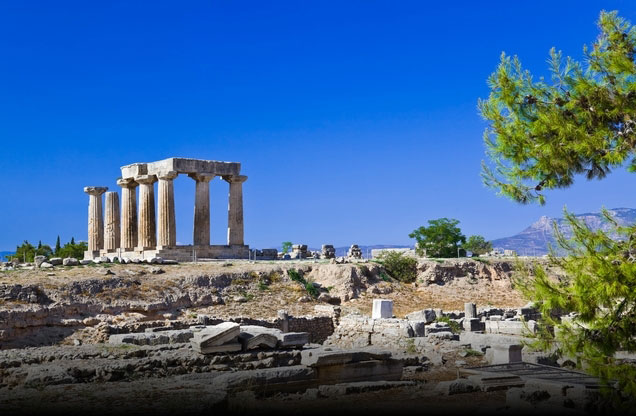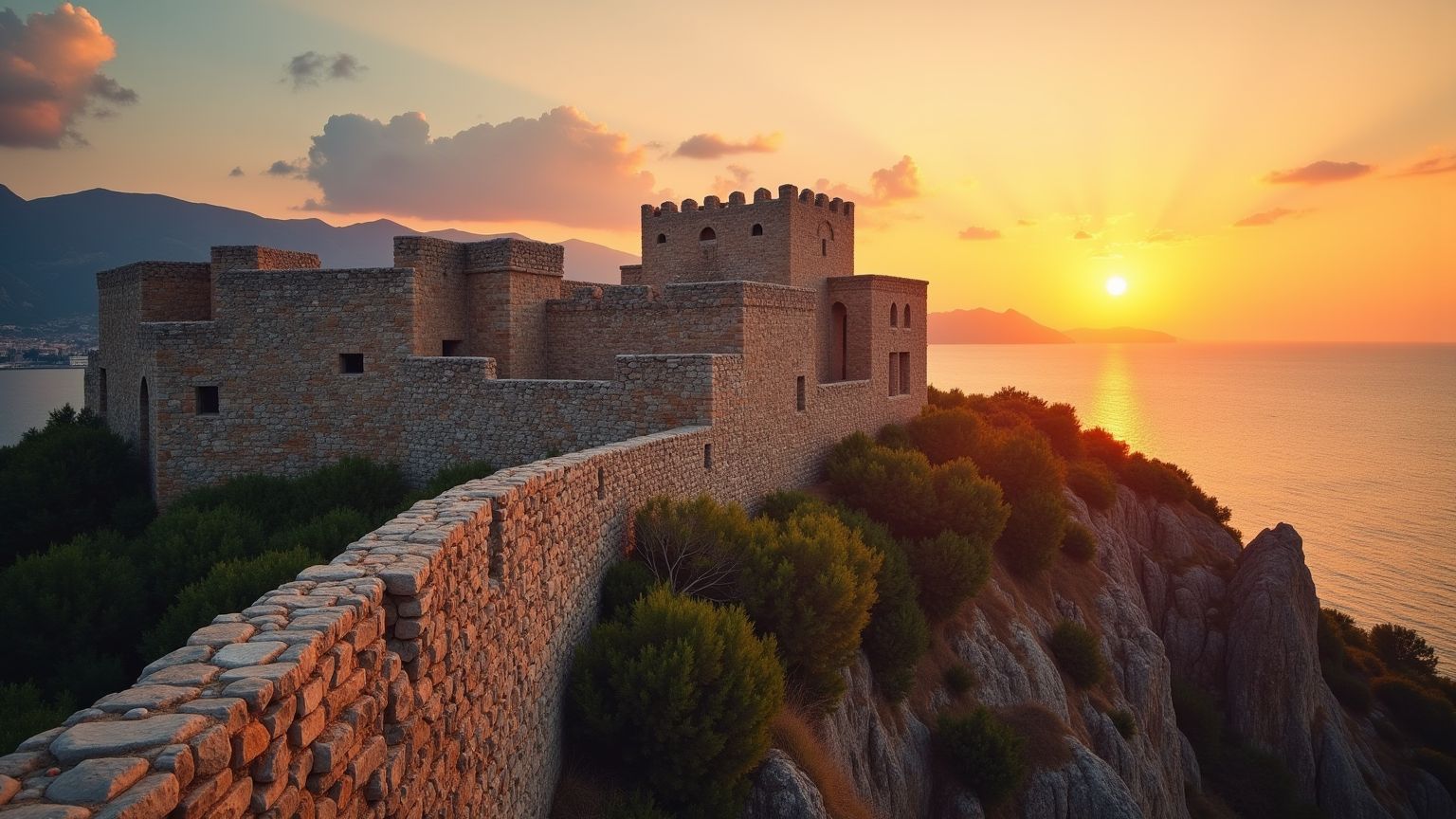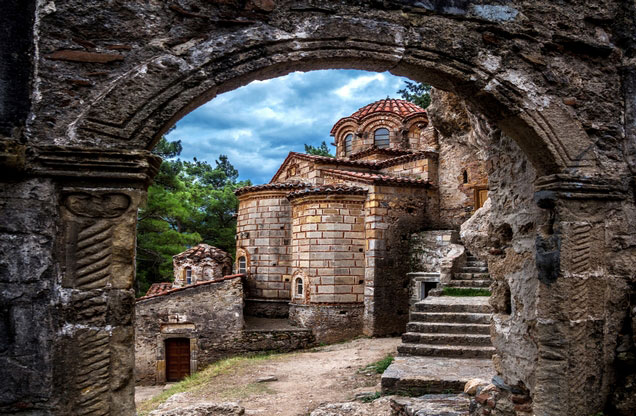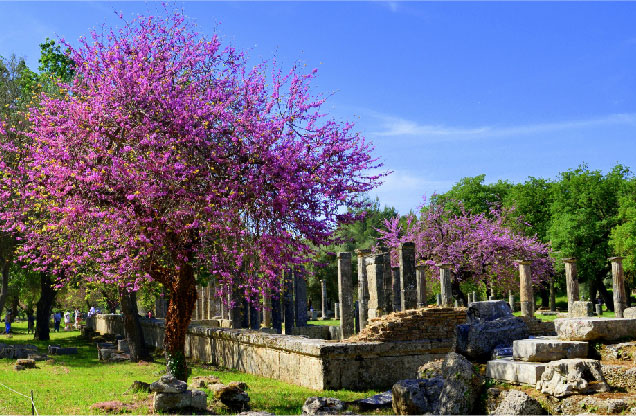A Full Day Journey: Ancient Theatre of Epidaurus Tour from Nafplio
Look, I've spent over a decade dragging wide-eyed travelers through the dusty wonders of the Peloponnese, and I've gotta tell you - the stone seats of the ancient theatre of Epidaurus have seen more of my backside than my own couch. After thousands of tours, I still get goosebumps every single time I step into these time capsules of human achievement.
The Ancient theatre of Epidaurus and Mycenae day trip from Nafplio isn't just another tourist trap - it's like mainlining 3,000 years of human civilization directly into your brain. Let me walk you through what makes this journey so special.
Why Nafplio Makes the Perfect Base for Exploring Ancient theatre of Epidaurus
Nafplio isn't just pretty - it's practically showing off with its ridiculous good looks and stupidly convenient location.
Greece's first capital after they kicked out the Ottomans sits like a jewel on the northeastern Peloponnese coast. Its narrow streets are a maze of charm that'll have your Instagram followers seething with jealousy.
But here's the real kicker - you can roll out of your boutique hotel bed (likely in some gorgeously restored 200-year-old building), grab a proper Greek coffee strong enough to wake the dead, and be standing in some of humanity's most significant archaeological sites before the caffeine even hits your bloodstream.
The proximity to both Mycenae and the ancient theatre of Epidaurus means you're not wasting precious vacation hours on a bus. Trust me, after watching thousands of visitors try to cram too much into too little time, this convenience is worth its weight in ancient gold masks.
Stepping Back in Time: The Mighty Kingdom of Mycenae
Just a 30-minute drive from Nafplio lies a place that was once thought to be purely mythical - like claiming you'd found Atlantis or Wakanda.
The Legendary Kingdom of Agamemnon
Mycenae wasn't some random settlement - it was the power center of a civilization that basically wrote the prequel to Western culture as we know it.
When Homer was spinning his epic yarns about the Trojan War, this was Agamemnon's home turf - the big cheese who led the Greek forces. For centuries, scholars thought it was all made up... until Heinrich Schliemann (an amateur archaeologist with more audacity than formal training) showed up in the 1870s and essentially said "hold my beer" before uncovering one of archaeology's greatest treasures.
Entering Through the Lions Gate
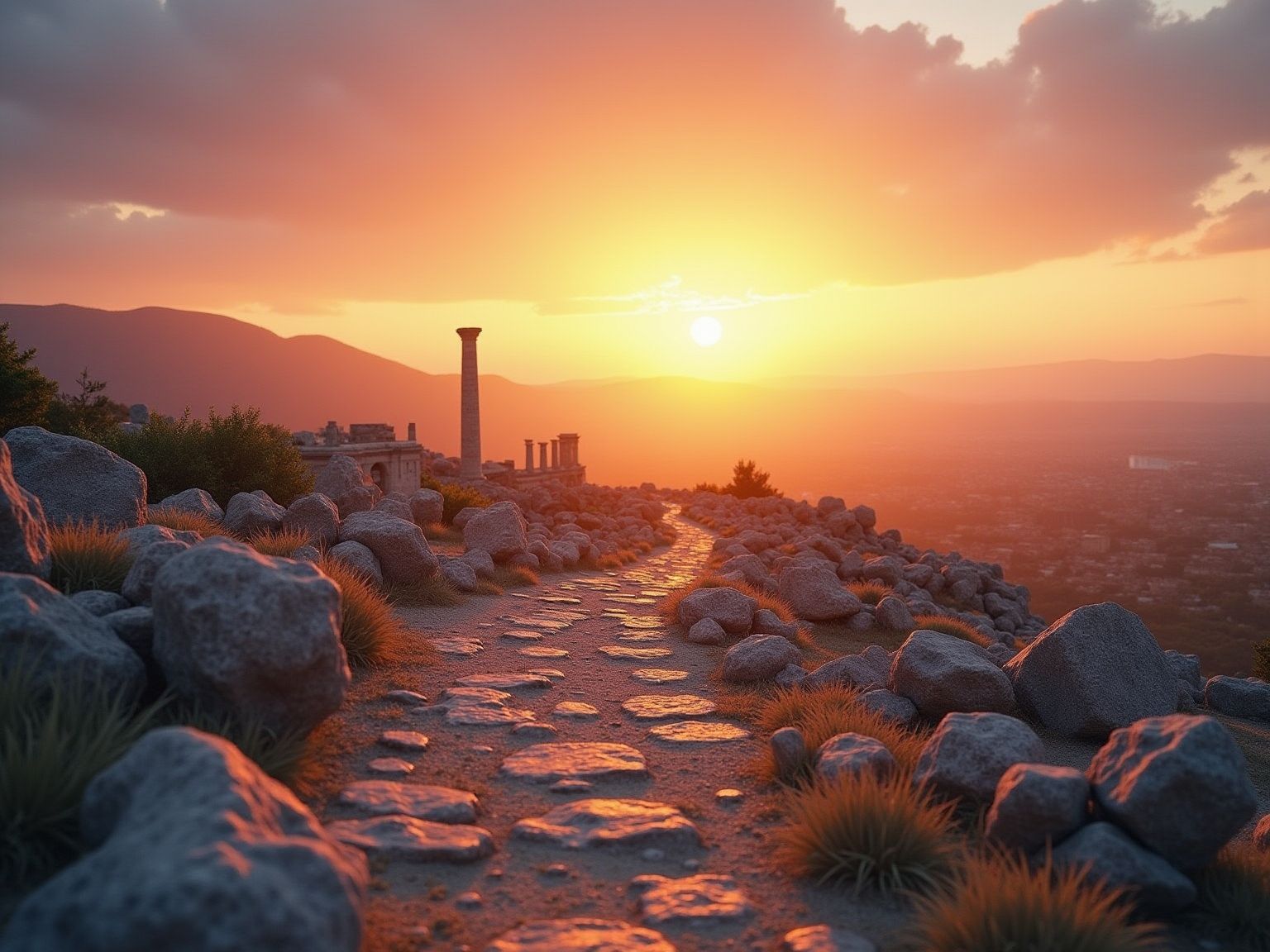
The Lions Gate hits you like a ton of 3,300-year-old bricks. This monumental entrance has stood since approximately 1250 BCE, making your local "historic" buildings look like they were constructed yesterday.
Look closely at those two lionesses (yes, they're female - no manes!) facing each other across that column. Those massive beasts weren't just decoration - they were a Bronze Age billboard screaming "EXTREMELY IMPORTANT PEOPLE LIVE HERE, PEASANTS."
• The engineering is mind-boggling
• Each stone weighs more than your car
• No mortar was used - just precision fitting
• It's survived earthquakes, wars, and tourists for 33 centuries
Marveling at the Cyclopean Walls
These walls got their name because the ancient Greeks literally couldn't fathom how humans built them. "Must've been one-eyed giants," they figured, which tells you something about how impressive these fortifications are.
I always make my guests place their hands on these massive stones. Feel that? That's a direct connection to people who lived when writing was a brand new technology and the wheel was cutting-edge innovation.
Some of these limestone blocks weigh upwards of 20 tons. For perspective, that's about the weight of two adult elephants. Now imagine quarrying that, moving it uphill without machinery, and positioning it so precisely that it still stands millennia later. Your contractor who can't fix a leaky faucet within six weeks suddenly seems even more inadequate, doesn't he?
Exploring the Royal Palace and Grave Circle A
Up at the summit, what's left of the royal palace might not look like much at first glance - just foundations and partial walls. But this is where Agamemnon would have plotted war strategies, hosted feasts, and made decisions that Homer would eventually immortalize.
Grave Circle A is where Schliemann had his "Holy mother of Zeus!" moment, uncovering those incredible gold funeral masks, including the one he dramatically (and probably incorrectly) declared "the face of Agamemnon." The craftsmanship of these treasures makes modern luxury goods look like dollar store knockoffs.
The Remarkable Treasury of Atreus
Just outside the citadel, you'll find what looks like a massive green hill with a dark entrance. This is the Treasury of Atreus, and it'll recalibrate your understanding of ancient engineering capabilities.
The perfect dome inside this tomb remained the world's largest for over a thousand years. The acoustics are so perfect that your whisper at one end can be heard clearly at the other - a Bronze Age achievement that modern architects with advanced computers still struggle to replicate.
When you stand in the center of this cavernous space, try humming softly. The entire chamber becomes a resonance chamber, and suddenly you're making music with a 3,300-year-old structure. It's the experience the ancient theatre of Epidaurus also delivers, but we'll get to that shortly.
Lunch Break: Authentic Greek Cuisine
By this point in the tour, stomachs are usually growling louder than the ancient Mycenaean lions. We'll stop at a family-run taverna where the menu hasn't changed much since Agamemnon's time.
Think char-grilled meats, olive oil pressed from groves you passed on the drive, and vegetables so fresh they were probably in the ground this morning. This isn't tourist food - it's the fuel that keeps the locals going, and it'll prepare you for our next archaeological masterpiece.
Epidaurus: Where Medicine and Arts Flourished in Ancient Greece
After lunch and perhaps a restorative shot of ouzo, we'll head to a completely different ancient site - the sanctuary of Asclepius at Epidaurus, home to the most perfectly preserved ancient theatre of Epidaurus in the world.
The Sanctuary of Asclepius: Ancient Greece's Healing Center
While Mycenae showcased military might, Epidaurus reveals a more compassionate side of ancient Greek civilization. This was essentially the Mayo Clinic of the ancient world, where people journeyed from all corners of the Mediterranean seeking healing.
Imagine ancient Greeks checking into this sprawling health resort around 800 BCE. They'd undergo purification rituals, make offerings to Asclepius (the god of medicine who carried that snake-wrapped staff that's still the symbol of medicine today), and then have a sleepover in the Abaton, hoping the god would visit them in dreams with a prescription.
What blows my mind - and usually my visitors' too - is how holistic their approach was. They had:
• Exercise facilities (ancient Greek CrossFit, basically)
• Thermal baths (prehistoric spa treatments)
• Nutritional plans tailored to patients
• Theatrical performances for psychological healing
• Surgical facilities with specialized tools
The ancient Greeks figured out millennia ago what modern medicine is still struggling to fully implement - that physical health and mental well-being are inseparable. The ancient theatre of Epidaurus wasn't just for entertainment; it was literally part of the treatment plan.
The Museum: Understanding Ancient Healing Practices
The site museum houses some genuinely weird and wonderful artifacts that would make modern doctors raise their eyebrows in respect.
The anatomical motives are particularly fascinating - these are small terracotta models of body parts that patients would dedicate either to show what needed healing or as a thank-you for a successful cure. Think of them as ancient equivalent of before-and-after Instagram posts.
There are also surgical tools displayed that look disturbingly similar to modern instruments. When my medical professional guests see these, they often go quiet, suddenly recalibrating their understanding of ancient capabilities.
The Masterpiece: The Ancient Theatre of Epidaurus
And now we come to the crown jewel - the ancient theatre of Epidaurus itself. I always save this for last because, quite frankly, nothing else can follow it.
Built in the 4th century BCE, this 13,000-seat theater achieves acoustical perfection that modern sound engineers still study and struggle to replicate. The ancient theatre of Epidaurus stands as a testament to mathematical precision and understanding of sound waves that shouldn't have been possible with ancient technology.
I've done this demonstration thousands of times, but it never gets old: I'll have my group sit in the very top row, nearly 60 meters from the stage. Then I'll stand at the center of the circular orchestra area and:
• Drop a coin
• Strike a match
• Whisper "Can you hear me?"
• Tear a piece of paper
Every sound reaches the upper seats with crystal clarity. No microphones, no speakers, no electrical amplification whatsoever - just perfect mathematical design and an understanding of acoustics that was literally thousands of years ahead of its time.
The ancient theatre of Epidaurus achieves this miracle through several clever design elements:
• The limestone seats filter out low-frequency background noise
• The perfect semicircular shape focuses sound waves
• The gentle slope creates an ideal angle for sound travel
• The prevailing breeze carries sound upward to the highest seats
What makes the ancient theatre of Epidaurus even more remarkable is that it's not a museum piece - it's still very much a working theater. During the summer Athens and Epidaurus Festival, you can watch Greek tragedies performed exactly as they were 2,300 years ago, in the exact same space, under the same Mediterranean stars.
Sitting in the ancient theatre of Epidaurus as the sun sets, watching Sophocles or Euripides come to life in the space they were written for - that's not just tourism, that's time travel.
The Return Journey to Nafplio
As we drive back to Nafplio in the golden hour light, there's usually a different kind of silence in the van - not the bored silence of people checking their phones, but the contemplative quiet of minds trying to process the scale of what they've witnessed.
The contrast between Mycenae and the ancient theatre of Epidaurus perfectly captures the duality of ancient Greek civilization - the warrior culture that built impenetrable fortresses and the philosophical minds that created spaces for healing and artistic expression.
By the time we pull back into Nafplio's harbor, with its Venetian fortress glowing amber in the sunset, most visitors have that slightly dazed look of people who've had their understanding of human history fundamentally altered.
Practical Tips for Visiting Mycenae and the Ancient Theatre of Epidaurus
After shepherding everyone from history professors to hyperactive eight-year-olds through these sites, I've collected some hard-earned wisdom:
• 🕘 Timing is everything: Start at 8am to beat both the heat and the tour buses that disgorge hordes around 10am
• 👟 Footwear matters: Those "cute" sandals will betray you on Mycenae's slippery limestone. Wear actual shoes with grip.
• 🧴 Sun protection isn't optional: The Mediterranean sun is merciless, especially at the exposed ancient theatre of Epidaurus. Hat, sunscreen, water. This isn't a suggestion.
• 📸 Photography sweet spots: Early morning light on Mycenae's honey-colored stones is magical; the ancient theatre of Epidaurus photographs best in late afternoon when shadows create definition in the seating sections
• 🌷 Best seasons: Mid-April to early June offers wildflowers sprouting among the ruins and perfect temperatures; September-October brings clear skies and fewer tourists
• 🎭 Performance tickets: If you're visiting in summer, booking tickets to a performance at the ancient theatre of Epidaurus is an absolute must. Seeing Greek tragedy in its intended venue is a bucket-list experience that words fail to describe.
Why These Sites Matter: Connecting with Our Shared Human Heritage
I've watched over 10,000 visitors experience these sites, from history buffs who arrive quoting Homer to teenagers being dragged along by enthusiastic parents. Almost without exception, something shifts in their perception during the day.
The ancient theatre of Epidaurus especially has this effect. When you sit on those ancient stone seats and realize that humans 2,300 years ago laughed at comedy, wept at tragedy, and experienced the full range of emotions we still feel today - there's a profound connection that transcends time.
In Mycenae, when you walk through the same gateway that heroes of myth once passed through, something similar happens. These aren't just old rocks - they're touchpoints to our shared humanity.
In our world of endless digital distractions and disposable everything, there's something profoundly grounding about connecting physically with spaces where history pivoted. The ancient theatre of Epidaurus reminds us that human creativity and genius aren't modern inventions - they're birthright qualities we've possessed for millennia.
Whether you're a hardcore history nerd or just someone looking for an authentic experience beyond beach lounging, this day trip delivers something increasingly rare - a genuine sense of wonder.
As someone who has walked these ancient paths so many times I could do it blindfolded, I can tell you with absolute certainty: the ancient theatre of Epidaurus and the mighty citadel of Mycenae still have the power to leave you speechless, contemplative, and perhaps most importantly, reconnected to the long, shared story of human civilization.
Highlights
- Visit two of the most famous monuments in one tour
- Learn all about the mythical Kingdom of Agamemnon
- Explore the ancient theatre of Epidavros
- Enjoy a luxurious and safe transfer







